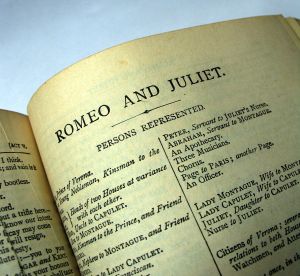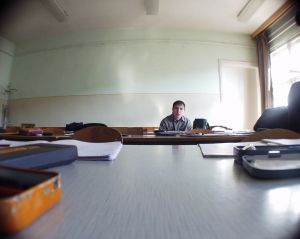Carol Ann Duffy
Havisham
Context
Strong historical influence centralises on Miss Havisham from Charles
Dickens novel Great Expectations. She is a bitter character who has been
left at the alter and has since never taken off her wedding dress. In
the novel she holds a grudge against all males. This connection with other
great works of literature makes the poem more effective and memorable;
Duffy expands on Dickens description providing further insight into the
character.
Structure
Duffy makes frequent use of enjambment and varied sentence length, varying
the pace in the poem. This helps to emphasise the changing emotions of
the character in the poem.
Language
Colour plays and important role in the poem, “yellowing, green,
red”. The use of colours has a strong effect on the audience and
emphasises the emotions involved. The single word “Spinster”
(a term that refers to a single woman similar to how bachelor refers to
a single an, although it has far worse connotations) emphasises the isolation
the woman feels. This has a strong effect on the audience and creates
a bitter tone. The situation itself is also one may women in the audience
can relate to.
Elvis’s twin sister
Context
Subtitle “Are you lonesome tonight” is a quote from Elvis
and is a simple and effective technique. This is reflected in last line
when is says she “walked/down Lonely Street”. In the poem
Elvis is alive through his (fictional) sister, a very different character
to her brother.
Structure
6x5 lined stanzas, rhyme is irregular.
Language
“Pascha nostrum immolatus est” means “Our passover is
sacrificed” a powerful symbol in Christian and Jewish literature.
To devotion of the nun contrasts with the emptiness of the pop star, who
is metaphorically sacrificed to the demands of the spotlight. This provides
a very different prospective of Elvis and almost crafts a sympathetic
character. The poem also has a gentle humour. The picture of the nun who
dances who speaks with a thick southern accent is light hearted. This
contrasts with the more serious message of who is more happy, who is ultimately
more successful the pop star or the nun? The poem appears to be constructed
to suggest it is the nun who is more successful.

Anne Hathaway
Context
The first line of the poem states “I give unto my wife my second
best bed…” is from Shakespeare’s will. Many considered
this to mean that Shakespeare did not think enough of his wife to give
her his best bed, however Duffy provides a rather different interpretation,
that their second best bed was the one the couple has sex in.
Structure
Follows a similar form as a Sonnet. Sonnets are stereotypically love poems.
Duffy may have selected to use a sonnet to immediately create a strong
impression of love, a simple but effective technique.
Language
Duffy uses many images to suggest an erotic or powerfully physical relationship.
Anne remembers how their bodies came together in harmony. There are a
number of words which suggest sexual contact, “kisses, lips, taste.”
There are also a number of words which could be interpreted sexually,
“a verb dancing in the centre of a noun” could suggest sexual
intercourse. At the end the “Casket” could represent her head
that holds the memories of her husband. This suggests that although her
husband is dead her memories of him will live on allowing us as an audience
to appreciate the depth of her emotions.

Salome
Context
The real story behind this poem took place in AD 30. Salome was a daughter
of Herodias and Philip (he was one of the ruling family in Palestine).
She danced before the ruler, Herod Antipas (Philip's half-brother and
her uncle), who promised to grant any request she might make. John the
Baptist had condemned Herodias because of her affair with Herod, who had
put him in prison. Prompted by her mother, Salome asked for the head of
John and at once he was executed.
Structure
4 free verse sections. It also makes extensive use of rhyme. “better-batter”
sounds run through out the poem.
Language
Salome uses men and then rejects them. The names in lines 14 and 15 are
the names of the Disciples of Christ. The use of these names helps us
remember the original Salome. This is effective because it expands upon
a piece of existing literature giving the audience reason to think. The
rhyme variations provide an oxymoron with the images or violence, underlining
the somewhat evil humour within the poem. This may be interpreted as poor
technique, which although memorable, it undermines the serious images
and themes.
Before you were mine
Context
How time brings about change and relationships with parents. The poem
is about Duffy’s mother during what Duffy would imagine her teenage
years to be like and when she was born. “The decade ahead…eh?”
suggests Duffy is asking which decade is better the decade before her
birth or after, the use of “eh?” at the end of the line is
a leading question suggesting that Duffy wants the answer to be the decade
to come.
Structure
The poem has 4x5 lined stanzas.
Language
The rhythm in the poem is fluid and natural, very short sentences alternate
with long sentences to create the impression of speech. The poet also
makes good use of tense. In the fist stanza Duffy imagines her mother’s
position ten years before she was born. The use of the present tense helps
to engage the reader. Duffy also makes good use of lingual effects. The
“thousand eyes” could be interpreted as a mirror ball creating
a feeling of excitement in the audience. The “thousand eyes”
could also represent the thousand eyes of dancers around the central characters.
“I see you, clear as scent” emphasises the clarity in the
imagined past, we cannot see smells, however Duffy has created something
so believable that she can see everything.

Education for leisure
Context
The poem is about mental instability. The poem could also suggest that
society fails those that do not conform.
Structure
5x4 lined stanzas. Short sentences may have been used by Duffy to force
their message into the reader. This works well with the violent actions
and images in the poem. They also ‘break’ any flow or rhythm
to the poem which could have been used to suggest a ‘broken’
character.
Language
The personal pronoun “I” is repeated endlessly to suggest
the person is egocentric. The character plays God, “I see that it
is good” is from Genesis explains deals with the creation of the
Earth. The poem follows an escalation of activity to conclude with “I
touch your arm” this suggests a violent attack on the reader. This
is a very powerful phrase and reminds the audience that there are people
in the World who will choose their victims at random for their own pleasure.

Stealing
Context
Duffy may be criticising society, for example when the thief says “better
dead than giving”, Duffy could be using this as a metaphor for how
we (western capitalism) acts. The land is stripped of its resources with
little given back, justifying this with “life’s tough”.
Structure
5x4 lined stanzas, no regular use of rhyme but the poem frequently uses
poetic techniques very effectively. Alliteration plays a very important
role in the poem. It contrasts with the short sentences and the destruction
within the poem, which could suggest the character is very creative, he
just lacks focus.
Language – Contrast between colloquial language such as “life’s tough” and more poetic language such as “a mind as cold as the slice of ice/within my own brain” suggest that the character in the poem could be of a great intellectual standing however this becomes masked through a lack of purpose. Varied position of pauses give provides the impression of speech. The final line of the poem provides a context, the speaker is likely arrested, or in jail talking to a counsellor, who could never understand him, they (like many in the audience) “have no idea what I’m saying”.

Reference Tools
Dictionary
Thesaurus
Maps
Scientific Calculator
Periodic Table
Translator
Unit Conversion
Resources
General Writing Techniques
English Language
The Course
Media Texts
Advise, Persuade or Argue
Writing to Advise
Writing to Persuade
Writing to Argue
Poetry from Different Cultures
Cluster 1 Poetry
Cluster 2 Poetry
Poetry Analysis
Describe, Inform or Explain
Writing to Describe
Writing to Inform
Writing to Explain
English Literature
Poetry Introduction
Carol Ann Duffy
Simon Armitage
Pre-1914 Poetry
Structuring an Essay
To Kill a Mockingbird
Introduction
Characters
Themes
Essay Plans


